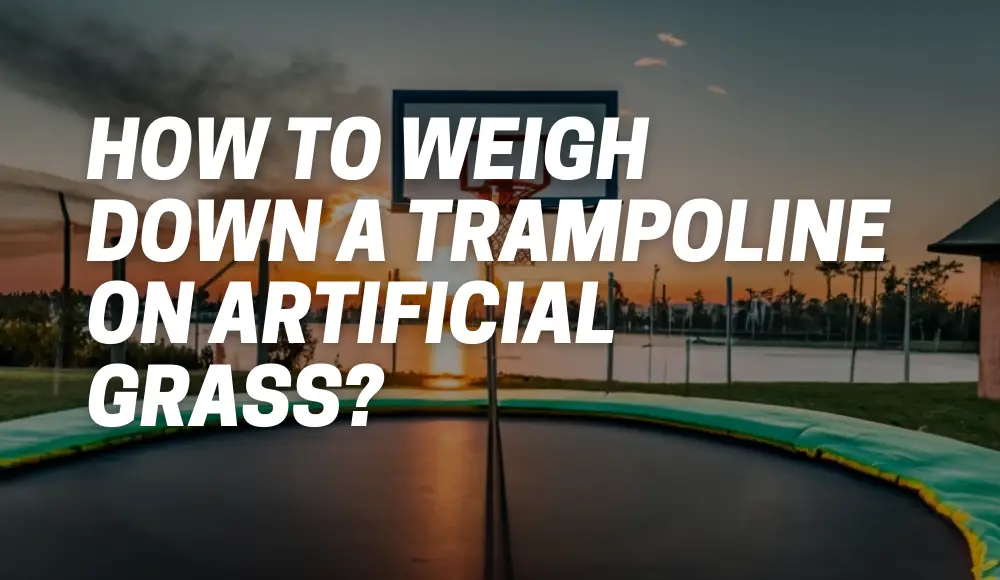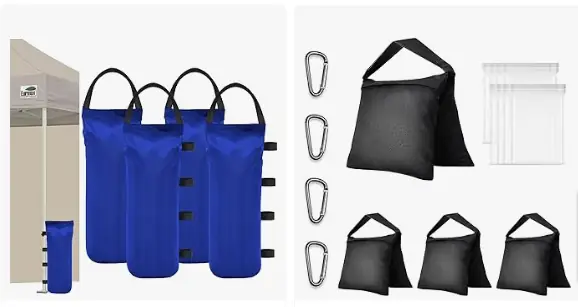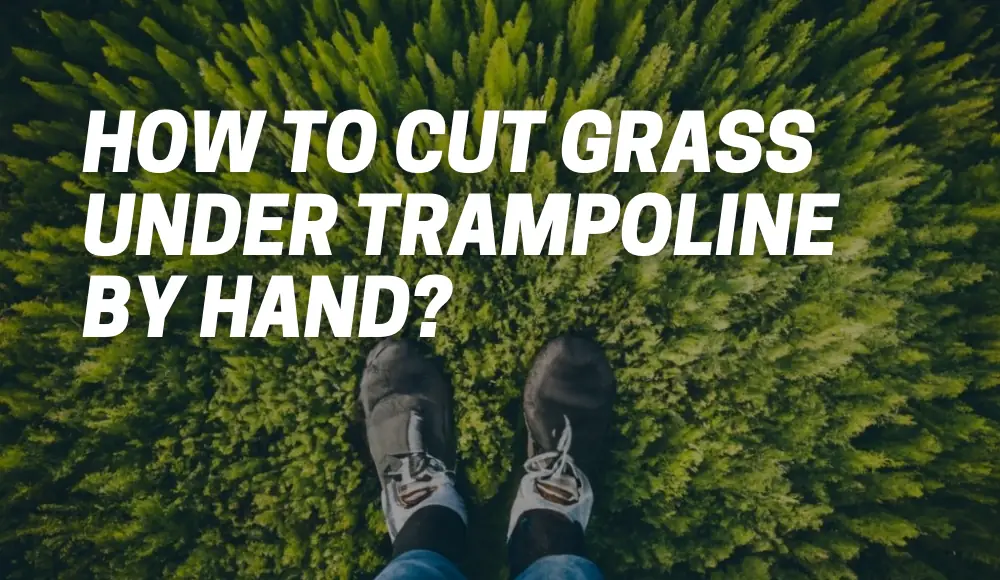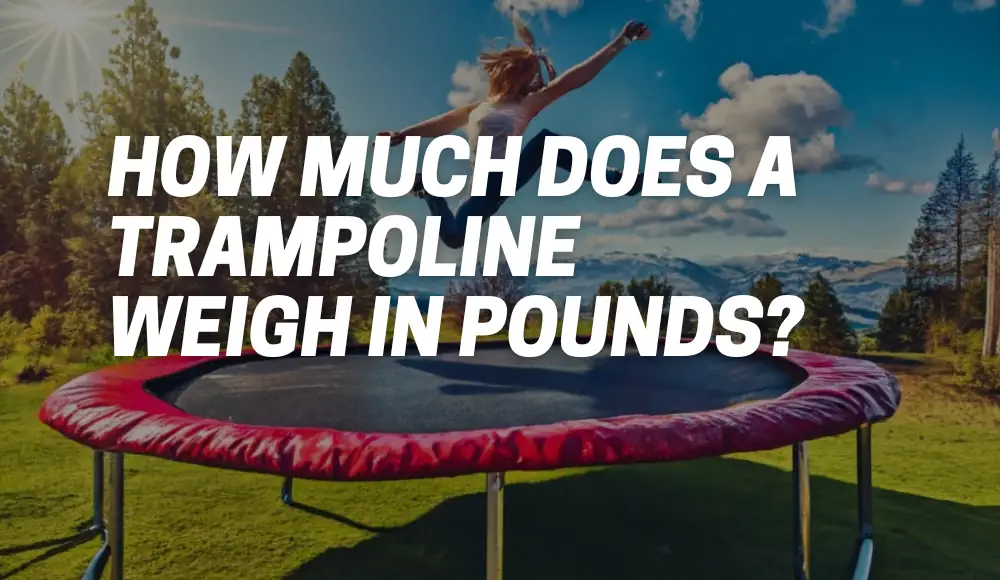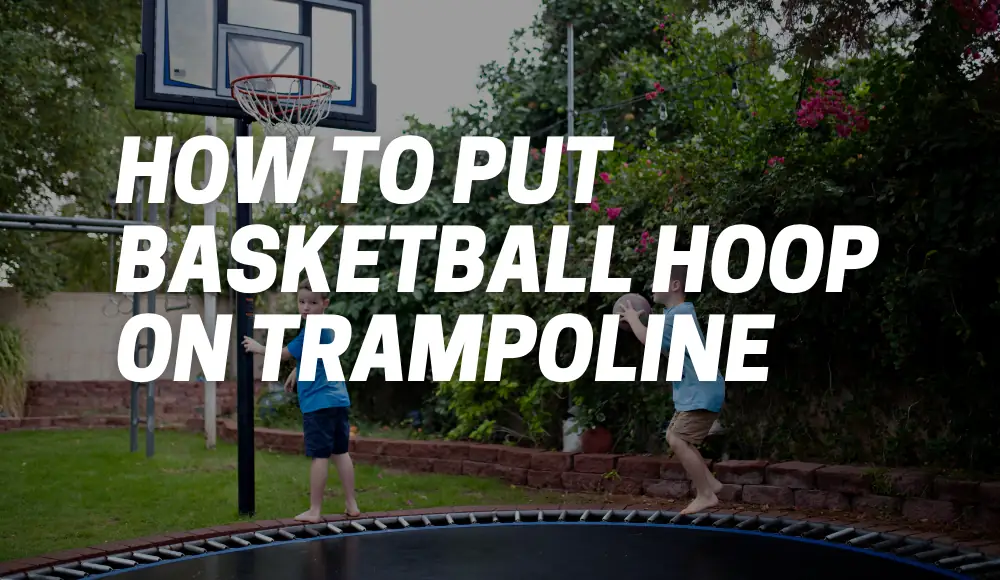Last updated on October 28th, 2023 at 01:10 pm
If you’re considering placing a trampoline on artificial grass, you might be wondering how to ensure it stays safe and secure. Can a trampoline go on fake grass without any issues? The answer is yes, but there are some important considerations and safety measures you should be aware of. In this guide, we will delve into all aspects of trampoline placement on artificial grass, from why you need to weigh it down to the best methods and safety tips.
Can a Trampoline Go on Fake Grass?
Artificial grass provides a suitable surface for trampolines. However, it’s essential to ensure your trampoline is properly anchored to prevent accidents and damage to your equipment. Here are the key considerations:
Why Do You Need to Weigh Down a Trampoline on Grass?
Trampolines, especially when in use, can be susceptible to strong winds and sudden movements. Placing a trampoline on artificial grass without proper anchoring could lead to several issues, including:
- Safety Concerns: An unsecured trampoline poses a significant safety risk, especially if it tips over or moves while someone is jumping on it. This can lead to accidents and injuries.
- Equipment Damage: Trampolines are a substantial investment. Not securing it properly can result in equipment damage, leading to costly repairs or replacements.
- Neighbor Concerns: An unsecured trampoline can be blown into your neighbor’s property, causing disputes and potential damage to their property.
By weighing down your trampoline on artificial grass, you address these concerns and create a safer environment for trampoline use.
What Are the Risks of Not Weighing Down a Trampoline on Grass?
Safety Concerns Associated with Unsecured Trampolines
The risks of not weighing down a trampoline on artificial grass are significant. Here are some safety concerns to consider:
- Tipping Over: Without proper anchoring, a trampoline can tip over, causing injuries to users.
- Wind Hazards: Strong winds can move an unsecured trampoline, potentially leading to accidents.
- Damage to Surroundings: An unsecured trampoline can collide with other objects, causing damage to your property or neighboring properties.
- Injury Risks: People jumping on an unstable trampoline are at a higher risk of falling or colliding with the trampoline’s frame or springs.
To prevent these risks, it’s crucial to secure your trampoline effectively.

Types of Trampoline Anchors for Artificial Grass
Now, let’s explore the various methods to secure your trampoline on artificial grass. There are several options available:
1. Stakes:
- Stakes are long metal rods that can be driven into the ground through the trampoline’s legs. They provide stability by anchoring the trampoline firmly.
2. Sandbags:
- Sandbags are another common choice for trampoline anchoring. They are placed on the trampoline’s frame or legs to add weight and stability.
3. Specialized Trampoline Anchor Kits:
- Some companies offer specialized anchor kits designed for trampolines. These kits typically include straps, stakes, or sandbags that are specifically tailored for trampoline use.
The choice of anchor will depend on your specific trampoline and the environmental conditions in your area.
Step-by-Step Guide to Weighing Down a Trampoline on Artificial Grass
Let’s go through the process of securing your trampoline on artificial grass step by step:
Step 1: Choose the Right Anchoring Method
- Determine which anchoring method is best for your trampoline based on its size and weight.
Step 2: Prepare the Anchoring Materials
- If you’re using stakes or sandbags, ensure they are readily available and in good condition.
Step 3: Position the Trampoline
- Place your trampoline on the artificial grass in the desired location, ensuring it’s level and well-balanced.
Step 4: Attach the Anchors
- If you’re using stakes, drive them into the ground through the trampoline’s legs. If you’re using sandbags, place them evenly on the trampoline’s frame or legs.
Step 5: Secure the Straps (if applicable)
- If you’re using specialized trampoline anchor kits, follow the manufacturer’s instructions to secure the straps properly.
Step 6: Test for Stability
- Give your trampoline a gentle shake to ensure it’s securely anchored.
Step 7: Regularly Inspect and Maintain
- Periodically check the anchoring to make sure it’s still secure. Tighten or replace components as needed.
By following these steps, you can ensure your trampoline is safely anchored on artificial grass.
How can I weigh my trampoline down
—
Common Issues and Troubleshooting
1. Trampoline Movement:
- If your trampoline is moving despite being anchored, double-check that the anchors are correctly positioned and secured. You may need to use additional anchors for added stability.
2. Weather-Related Concerns:
- In extreme weather conditions, like heavy storms or strong winds, it’s advisable to disassemble the trampoline temporarily and store it indoors to prevent damage.
Maintenance and Seasonal Considerations
To keep your trampoline safe and in good condition, consider the following maintenance tips:
- Regularly inspect the anchoring components for wear and tear.
- Lubricate the trampoline’s springs and joints to prevent rust.
- Disassemble and store the trampoline during the winter months to prevent damage from snow and ice.
Safety Tips for Using a Trampoline on Artificial Grass
When using a trampoline on artificial grass, always prioritize safety:
- Follow weight limits recommended by the trampoline manufacturer.
- Supervise children while they’re using the trampoline to prevent accidents.
- Ensure the trampoline is in good condition and free from tears or damage.
Comparing Natural Grass vs. Artificial Grass for Trampoline Anchoring
When deciding between natural grass and artificial grass for trampoline placement, consider the following:
Natural Grass:
- May provide a more stable surface.
- Requires regular maintenance, including mowing.
- Natural grass can become uneven over time.
Artificial Grass:
- Offers a consistent, level surface.
- Requires minimal maintenance.
- Ensures a safe and reliable foundation when anchored properly.
Can You Put Heavy Things On Fake Grass?
Yes, you can put heavy objects on fake grass, but there are some important considerations to keep in mind:
- Weight Distribution: Ensure that the weight is evenly distributed to prevent damage to the fake grass. Placing heavy objects on a concentrated area could result in indentations or damage over time.
- Protection: To protect the artificial grass, you may want to use a barrier, such as a wooden or plastic mat, under heavy items like furniture or plant pots. This will help disperse the weight and prevent direct contact between the heavy object and the grass.
- Periodic Relocation: Consider periodically relocating heavy objects to allow the grass to recover and maintain its appearance. If items are left in the same spot for an extended period, it can lead to flattening of the artificial grass fibers.
- Weather Conditions: Be mindful of the weather. If you’re expecting heavy rain or extreme weather conditions, it’s a good idea to move heavy items to prevent water from pooling or causing damage to the grass.
- Consult Manufacturer Guidelines: Always refer to the manufacturer’s guidelines and recommendations for your specific artificial grass product. They may provide insights into how to best care for your artificial grass and what is safe in terms of weight and usage.
By taking these precautions, you can safely place heavy objects on fake grass without causing damage or issues. However, it’s essential to be mindful of proper maintenance to ensure the longevity and aesthetics of your artificial grass.
In conclusion, weighing down a trampoline on artificial grass is a necessary safety measure to prevent accidents and damage. By following the steps and tips in this guide, you can enjoy trampoline fun with peace of mind. Remember that proper anchoring is the key to a safe and enjoyable experience.
How To Secure Trampoline From Wind?
Securing a trampoline from the wind is crucial to prevent it from tipping over or becoming a safety hazard. Here are some steps and tips to help you secure your trampoline from wind:
1. Proper Anchoring:
- Use suitable trampoline anchors: Trampoline anchor kits or heavy-duty stakes are designed to provide stability in windy conditions. Choose anchors that are appropriate for your trampoline’s size and weight.
- Install anchors correctly: Follow the manufacturer’s instructions for anchor installation. Anchors should be placed at even intervals around the trampoline to ensure stability.
2. Weighted Solutions:
- Sandbags or weights: Place sandbags or other heavy objects on the trampoline frame or legs. This additional weight will help keep the trampoline grounded during windy conditions.
- Large rocks or concrete blocks: If you don’t have sandbags, you can use heavy rocks or concrete trampoline weights as weights. Make sure they are secured to the trampoline frame.
3. Windbreaks:
- Install windbreaks or barriers: Windbreaks, such as privacy screens or fencing, can be placed around the trampoline to block the wind. This helps reduce the wind’s impact on the trampoline’s stability.
4. Disassemble During Strong Winds:
- In extremely windy conditions, it’s best to disassemble the trampoline and store it indoors, if possible. This is the most secure way to protect it from strong winds.
5. Regular Inspections:
- Periodically check the trampoline’s anchors and security measures to ensure they are still in place and tight. Re-adjust and re-anchor as needed.
6. Follow Safety Guidelines:
- Always adhere to safety guidelines provided by the trampoline manufacturer. This includes weight limits, supervision, and usage instructions.
7. Meteorological Awareness:
- Pay attention to weather forecasts, especially in areas prone to high winds. If strong winds are expected, take preventive measures in advance.
8. Secure the Enclosure:
- If your trampoline has a safety enclosure, ensure that it is properly secured. A well-anchored enclosure can help reduce wind resistance and prevent the trampoline from becoming airborne.
9. Educate Users:
- Teach trampoline users about the dangers of windy conditions and the importance of following safety rules. Encourage them to avoid using the trampoline during strong winds.
Prevention is key when securing a trampoline from the wind. Taking the necessary precautions and using appropriate anchoring methods will help ensure the safety of users and the longevity of your trampoline. Always prioritize safety when dealing with outdoor equipment in potentially windy conditions.
—
Table: Trampoline Anchoring Methods Comparison
| Anchoring Method | Pros | Cons |
|---|---|---|
| Stakes | – Provides stability | – May require some effort for installation |
| – Secure if driven deep enough | – May not be suitable for all trampolines | |
| Sandbags | – Easy to use and move | – Less effective in very windy conditions |
| – No ground penetration required | – May need frequent adjustments | |
| Specialized Anchor Kits | – Tailored for trampoline use | – Costlier compared to DIY methods |
| – Includes various anchoring options | – Installation may require more time |
Remember to choose the method that suits your trampoline and local weather conditions best. Always prioritize safety above all else.
Now, with this comprehensive guide, you can enjoy your trampoline on artificial grass while keeping safety a top priority.
